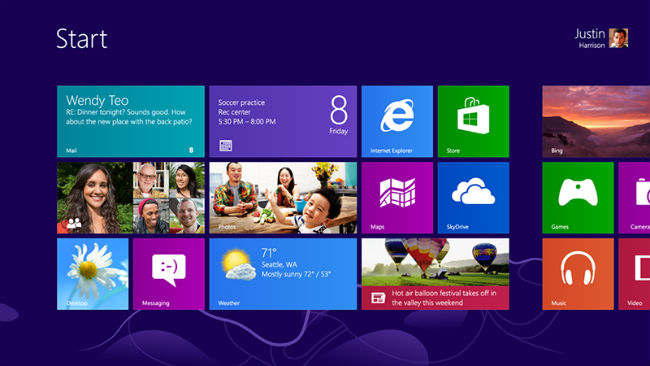Apple might have recently launched the iPad Mini, but Apple’s long-standing rival, Microsoft, it looking to steal some of the company’s thunder with Windows 8.
A new release of Windows might seem like a new car from General Motors: exciting for people who are really into that kid of thing, but something most people won’t really care about. Windows seems to have always been kind of there, and not really that exciting.
On the other hand, the biggest change to Windows in this new version is the Metro interface, designed for tablets. Now that Microsoft has designed a tablet interface, it shows that tablets are now a mainstream computing option for business. It might seem like an iPad copycat, but Microsoft’s been pushing for tablets since the ’90s. The latest effort, apart from Windows 8, is Microsoft’s surface tablets. It also supports the ARM architecture also by a lot of tablets, including the iPad.
The new look is such a radical departure from the traditional Windows desktop environment that there was an uproar among some users comparable to the radical interface overhaul of Ubuntu’s Unity interface. When Ubuntu launched a new version of Ubuntu earlier this month, it welcomed disgruntled Windows 8 users on its website. Gabe Newell of Valve also announced that Steam would be running on Ubuntu in anticipation of the supposed disaster the new system would be.
On the other hand, predictions of doom seem premature. First, it’s very easy to get to a traditional Windows environment, and second, even in the era of social media and tablets and other goodies, still no one ever got fired for buying Windows. Most businesses will still buy Windows machines for the foreseeable future.
Apart from the overhauled interface, Microsoft has added a few other new features. It’s added antivirus capabilities to Windows Defender, essentially bundling Microsoft Security Essentials with the system. It’s also adding PIN numbers as a way to log in to the system, which should also be handy on tablets.
Windows 8 also has the option to connect to SkyDrive for cloud-based storage.
Another new feature is the Windows Store, which allows users to purchase and download Windows apps right from inside the system, adding functionality similar to the Apple Store and various Linux distros.
The only version available to users who want to upgrade their Windows installations is Windows 8 Pro, available for $39.99 as a download, and $69.99 shipped.











